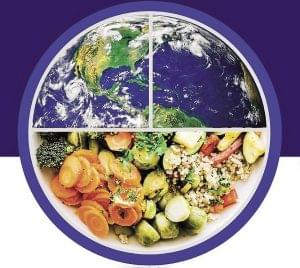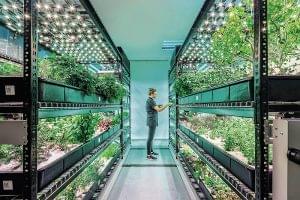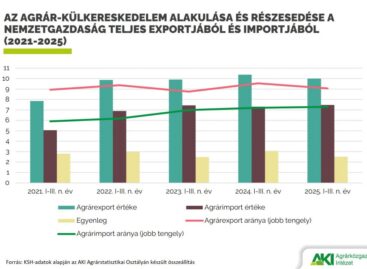Magazine: Year of the Rat
Our traditional trend analysis at the beginning of the year makes an attempt at systematising the large volume of information available on food in 2020, the Year of the Rat in the Chinese calendar. Food has become one of the most important topics in public discussion, food is trendy and cool these days. Consumers are looking for products that are important to them much more consciously than before. In developed countries, the food buzzwords are healthy, sustainability and plant-based. It isn’t only fresh, local, organic, ecological footprint and fair trade that are important factors for consumers any more, but also reducing food waste whatever it takes. Another very important trend is utilising less plastic in the food industry and gastronomy. This is also true for Hungary: from next year single-use plastics will be banned!

Consumption habits don’t change overnight, and in poorer countries, food innovation only represents a small segment of the market. In Hungary, most grocery stores already offer sugar-free and low-fat products, food for consumers with some kind of intolerance, plant-based, vitamin-enriched and organic food. According to US market research company NPD, in the USA 50 percent of consumers are trying to lose weight in 2020 – half of them by following special diets. There is some kind of evolution going on in consumer behaviour, a good example of this is consumers following a flexitarian diet: on certain days of the week they don’t eat meat.

Innovative products can make our diets really diverse. An FAO study has revealed that 75 percent of the groceries we consume come from 5 animals and 12 plants (there are 300,000 edible plant varieties). Gastronomy must react to changing consumer needs even faster than the food industry. For instance in the USA four restaurants teamed up to offer guests one dish every day in any of the four eateries for a ‘subscription fee’ of USD 99/month or USD 1,000/year. The golden age of expensive degustation menus is over, while food halls and food courts are more and more popular, together with the highly positioned marketplaces of big cities, such as the Downtown Market Hall in Budapest, where star chefs are running more experimental restaurants.
In Hungary, restaurants are happy to see a growing number of guests showing up, and the country’s culinary culture is developing. The workforce shortage causes many problems, just like the level of trade education. Guests’ taste is becoming more sophisticated, thanks to the press and social media. Being authentic and environmentally conscious is now a basic requirement in the Hungarian hospitality sector too. In Western Europe, many restaurant owners are testing their concepts with the help of pop-up restaurants. One of the most important trends is the growing proportion of home-delivery food: last year the sum spent on food delivered to the homes of consumers in the USA grew three times faster than the money spent in restaurants. Usually, such food is made in so-called ghost kitchens – units specialising in preparing food for home delivery.

All over the world places for collective cooking are opening. As a result of the premiumisation trend, the fast-casual segment is developing faster than fast-food restaurants. Small restaurants and snack bars situated at petrol stations or in the trading areas of hypermarkets are also positioning themselves higher than before. Vertical gardening to grow fresh herbs and vegetables is also more widespread, especially in retail outlets – such gardens aren’t really frequent in restaurants yet. There is a return form of industrial design ideas to natural concepts – the eating environment has to be as organic as possible, with many plants in the restaurant. Metal is popular again, combined with wood or textile. The ‘official’ colour of the year is blue, more precisely PANTONE 19-4052 Classic Blue.
Vegetarian cuisine is spreading at breakneck speed. Bowl food has remained popular too and the personalisation trend is definitely in: by this, we don’t only mean food prepared with one’s personal nutritional needs in mind or DNA-focused eating, but also the concept when it is the guest that combines the available ingredients for their dish. Africa is the new Asia in the culinary world. //
Related news
Agricultural foreign trade surplus decreased in the first three quarters of 2025
🎧 Hallgasd a cikket: Lejátszás Szünet Folytatás Leállítás Nyelv: Auto…
Read more >Food industry loan portfolio increased by 3.9 percent in the third quarter of 2025
🎧 Hallgasd a cikket: Lejátszás Szünet Folytatás Leállítás Nyelv: Auto…
Read more >Hungarian Innovation Association: around 500 applications received for the 35th National Science and Innovation Olympiad
🎧 Hallgasd a cikket: Lejátszás Szünet Folytatás Leállítás Nyelv: Auto…
Read more >Related news
Layers of problems
🎧 Hallgasd a cikket: Lejátszás Szünet Folytatás Leállítás Nyelv: Auto…
Read more >Replanning for export markets
🎧 Hallgasd a cikket: Lejátszás Szünet Folytatás Leállítás Nyelv: Auto…
Read more >






